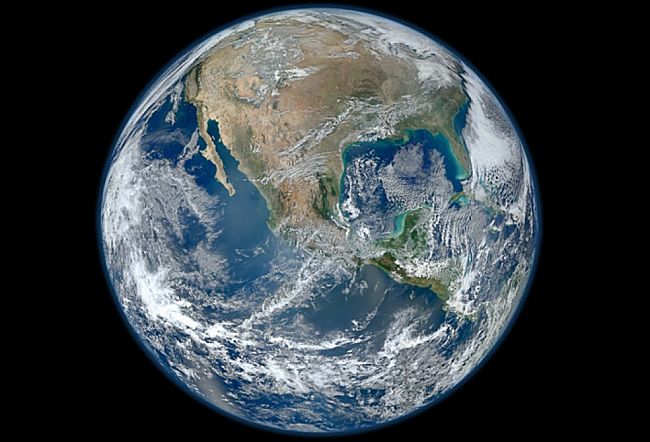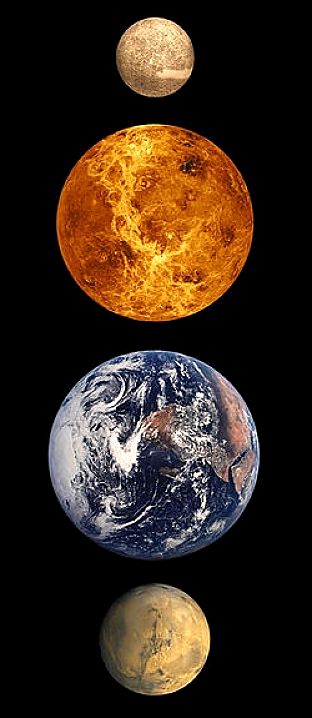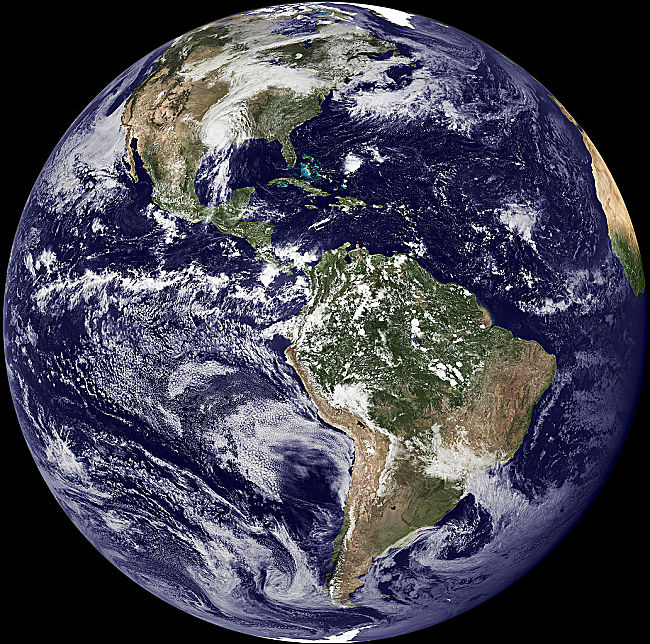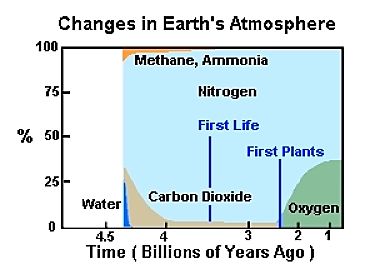Our Planet Should be Named Planet Water not Planet Earth
Water the Hub of Life
We have given our planet the wrong name Planet 'Earth' - it should be Planet 'Water'.
Our solar system, and the universe, are full of 'Earth' planets. There's lots of dirt and rocks out there, but planets covered in liquid water, especially in large oceans are relatively rare. Our special home, 'Planet Water' is truly unique in our solar system with liquid water covering 70% of its surface.
Another key point is that water is absolutely essential for Life as we know it. The life on our planet is carbon based, but without liquid water there would be no life here. 'Water is the Hub of life' on Planet Water and our lives and the future of all life on our planet depends on water.
"Water is the Hub of Life. Water is life's mater and matrix, its mother and medium. Water is a most extraordinary and unique substance! Nearly all its properties are strange, which enabled life to use these properties as building blocks for its vital machinery. Life makes water dance in tune with the solids." Adapted from Albert Szent-Gyorgyi (1972)
Planet Water




Why Water is the Stuff of Life
There are some key points about the link between water and life
- The water on earth accumulated as Earth's precursor grew via gravity as it attracted debris and comets from the rubble in the early solar system. The showers of bodies onto the surface of the earth initially generates large amounts of heat, so that at first the lighter elements such as water vapour remain in orbit or are lost. Eventually the earth cools enough so the water vapour is retained. There was initially no free oxygen in the atmosphere, which at this time it was a collection of mostly ammonia, water vapour, methane and carbon dioxide, held to the earth by gravity which was enough for the planet to retain an atmosphere. Though sheer chance the temperature of the earth dropped below 212 degrees F (100 degrees C) allowing the water to condense into oceans and the physical water cycle began (evaporation from the oceans => vapour => clouds => rain => drain into rivers => discharge into the ocean and round and round she goes).
- It is strange but true that the total weight of water currently present in all the oceans, lakes and rivers amounting to about 1024 grams, is thought to be about the same as the mass of water contained in the crust of the ancient earth.
- Life originated in the ocean
- Life could only leave the ocean and venture on dry land when it learnt to grow a skin and take the water with it. We humans are all bags of salt water.
- We terrestrial animals are still essentially water animals, we have the water inside and carry it around in a bag and circulate it around our bodies to bathe our cells in it. Our cells are aquatic creatures
- We are like walking aquariums with all our cells bathed in water which makes about 70% of our weight. Without water we die.
- Our origin from the sea is still reflected in the composition of our blood. The concentration of the ions in our blood is still the same as that of the primordial oceans from in which life developed. The ocean provided the essential for life water, carbon based molecules, organic molecules (including C02), oxygen and ions. We carry a bag of ancient ocean in our bodies.
- Life’s machinery is constructed on organic matter bathed and sustained by water.
- The chemical and physical properties of water are profoundly linked with life. It is water the sustains the shape and three-dimensional shape of proteins and lipids, and supports the structure of membranes which are a key part of our cells.
- Water plays a critical central role in the entire energetics of life on the Planet Water. The driving force for life is the energy of the sun which is converted by our friends the 'Plants' into carbohydrates and other organic molecules that we eat to sustain our cells. How do these ultimate solar collectors, the plant cells do it? They use chlorophyll to capture the solar energy and use it to split the water molecule H2O into H and O. The hydrogen is combined with CO2 to form organic molecules such as sugar. The waste product is Oxygen which is released into the atmosphere and used by the plants to respire. There you have it - plants are the ultimate solar cells, the ultimate engines for removing CO2 from the atmosphere, and the ultimate means of generating the oxygen we need to live. Give three cheers for the plants. If fact, they were so good at what they do, that they completely changed the entire gas composition of Planet Water. Talk about Climate Change - Look what he plants did.
How Plants Changed Everything - The Ultimate Climate Change
What the Plants Did

Originally the atmosphere was perhaps 50-70% carbon dioxide and oxygen was essentially absent. Chemical processes pulled the CO2 levels down to about 5% and the plants eventually pulled it down to about 0.04% that it is today. Importantly the plants also build the oxygen levels to the 21% today, otherwise we could not exist. The water cycle in life is completed when animals and plants respire. The energy built into organic molecules is released by special pathways that break the organic structure and uniting H an O into water again. This is how we get the energy to live and do the things we do. The energy of the sun is used to split the H2O molecule into H and O, it is stored in organic molecules - just like in a battery, and our cells can get the energy stored by combining the H and O back into water.
Life is a revolt against natural processes. The dominant feature of inanimate nature is that it naturally moves towards an equilibrium which has maximum disorder (decays to dust), that is to a state of maximum entropy (i.e. maximum disorder) and with little or no of free energy. Life bucks the trend of natural processes in the Universe. The main feature of life is that it tends to build and maintain order and structure. In other words, life acts to decrease its entropy, to fight the forces of decay. Life also acts to increase its free energy. Increasing entropy means tending to a state of complete randomness. Life has order, a pattern, and structure which it must work at to sustain and prevent decay. When we die we quickly decay - from dust to dust. Maintaining this structure and order requires energy, which ultimately comes from plants using solar energy to split the water molecule which is the opposite of entropy. Living organisms work hard to avoid decay by eating, drinking, breathing and breaking down organic molecules combining H with O to form water. Thus a living organism fights to increase its entropy - i.e. produces positive entropy - to avoid decay and death. Living organisms can only stay alive, by constantly consuming or extracting the negative entropy built into the structure of organic molecules by plants. Plants using solar energy to sustain themselves when the sun is shining.
What an organism consumes to stay alive is negative entropy. We are heterotrophs- living organisms that can not make their own food and survive by consuming complex organic substances for nutrition. Thus us heterotrophs devour negative entropy by utilising the potential energy built into the complex structure of organic molecules by the auotrophs, such as plants that use solar energy to create structure in organic molecules such as sugar, that are a type of organic battery. Autotrophs are organisms that can make their own food from inorganic substances, using chemical or solar energy. Certain bacteria, algae and green plants are autotrophs. Plants also burn organic molecules at night to sustain themselves when they cannot get energy from the sun.